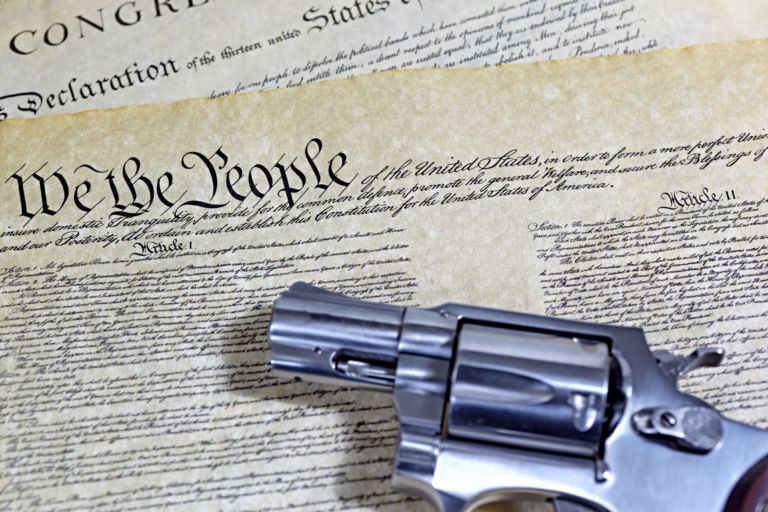- Street violence has claimed the lives of far too many innocent Black children, and the current spike in violent crime makes the problem worse
- Deploying more police officers to act as peacekeepers in high-crime communities would deter the violence that leads to such deaths
- Saving innocent Black lives is a compelling reason to implement a program of intensive community policing
Americans are intensely concerned about protecting school kids from mass murderers, and with good reason. However, it’s important to remember that drive-by shooters pose an even greater threat to the lives of innocent children. Indeed, hardly a week goes by without at least one child dying as an accidental result of a drive-by shooting.
One such child was three-year-old Asiah Figueroa, who was asleep in bed at his grandmother’s house in North Charlotte when drive-by shooters sprayed the house with gunfire on September 7, 2021.
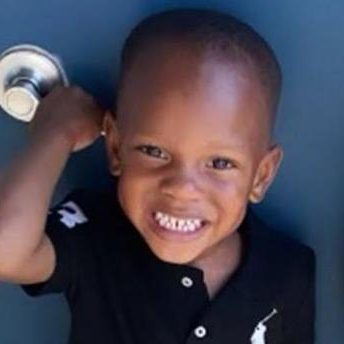
Asiah was hit and died on the way to the hospital. His four-year-old sister was also hit, but she survived.
Sadly, Asiah wasn’t the only innocent Black child killed by street violence during the first week of September last year. Nine-year-old Jayden Harris was shot and killed on the 1st of the month when someone started shooting into his house in Louisville.
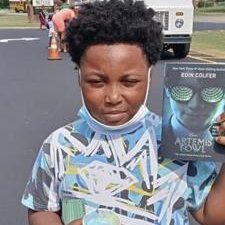
Four-year-old Mychal Moultry Jr. was shot and killed on the 3rd when someone started shooting through the window of his apartment in Chicago.
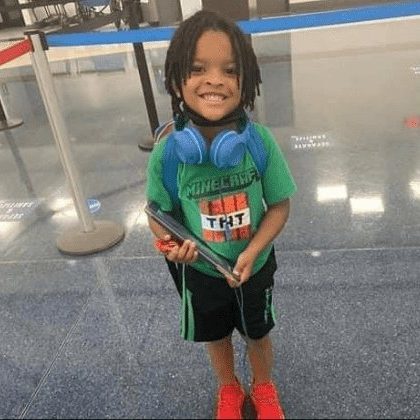
And three-year-old Calyia Stringer was shot and killed on the 5th when someone shot into her house in East St. Louis, Illinois, while she was watching TV.
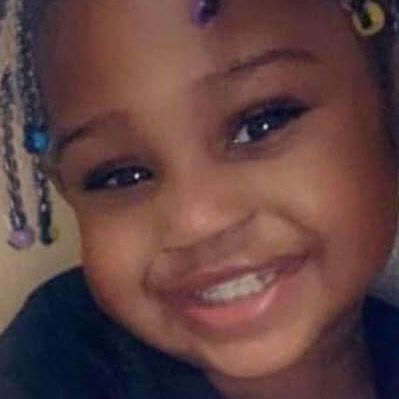
All four deaths are included in a database of children killed by street violence compiled by libertarian activist Leonydus Johnson. Covering a period beginning in 2020 and ending in 2021, the database lists 133 children in all, along with photos and links to news articles and GoFundMe pages created by loving friends and relatives.
The deaths of Jayden, Mychal, Calyia, and Asiah were tragic for the families of the murdered children, and they were traumatic for the communities in which they occurred. However, compared to what typically happens when a Black adult is killed by a police officer, the reaction to the deaths of these children was rather muted. National and international news organizations didn’t flood the media with sensationalized stories about the deaths. Protestors didn’t converge on the cities in which the deaths occurred. The Department of Justice didn’t investigate. Corporations didn’t pledge millions of dollars to advocacy organizations and spend millions more on HR consultants. State and federal legislatures didn’t enact new laws and approve new spending measures. None of these things happened when Jayden, Mychal, Calyia, and Asiah were killed, but at least some of them probably should have.
Contrary to a common misapprehension, Americans of all races are far more likely to be killed by violent criminals than by police officers. According to the Washington Post, only 60 unarmed civilians were killed by police officers in 2020, and of these only 18 were Black. By contrast, according to the FBI almost 18,000 Americans were murdered in 2020 — a 30% increase over 2019 — and approximately 10,000 of those homicide victims were Black. That means that in 2020 Blacks were more than seven times as likely to be murdered as whites, a disparity that has remained fairly constant over a long period of time.
Those facts alone ought to make reducing the homicide rate an urgent priority for anyone who believes Black lives matter. Adding to the urgency, moreover, is the fact that it isn’t just Black adults who are particularly at risk. According to the Bureau of Justice Statistics, between 1980 and 2008, Black children under the age of five were three to four times as likely to be murdered as white children of the same age throughout the entire period.
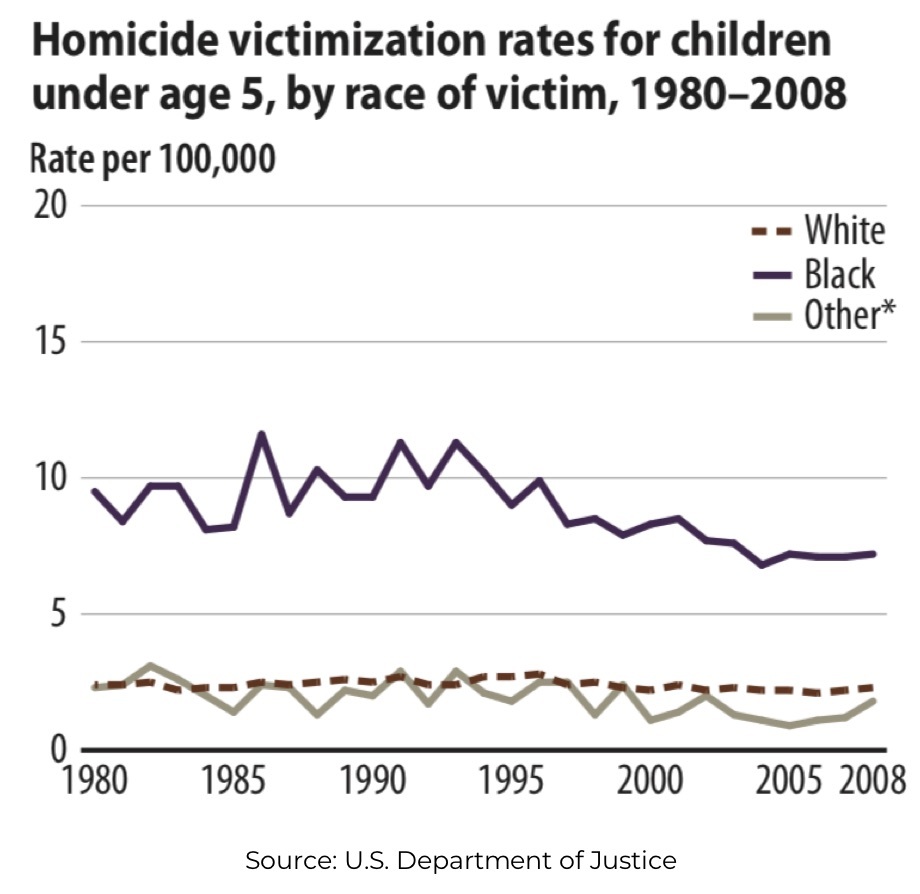
Like other homicide victims, most juvenile homicide victims are killed by people within their circle of family and acquaintances. Some, however, are killed by strangers. Also, as Leonydus Johnson’s database shows, far too many of them die as a result of street violence that had nothing to do with them at all.
If you’ve got the stomach for it, scroll through the whole database — 133 faces, almost all of them Black. Who can doubt that those young lives mattered very much indeed? Who can deny that we need to prevent such deaths if we can. The question is, how?
In response to that question, many will no doubt suggest the answer is to impose stricter regulations on firearms or to somehow address “the root problem” by spending more money on community development and social services. However, there is scant empirical evidence that those approaches significantly reduce the levels of crime and violence.
Fortunately, there’s an alternative approach to crime control that has been repeatedly shown to be effective, efficient, and humane. Intensive community policing — i.e., the strategic deployment of large numbers of well-trained and well-managed police officers in high-crime, high-disorder neighborhoods — is a proven method for deterring crime, including the kind of senseless violence that leads to the death of children like Jayden, Mychal, Calyia, and Asiah.
Summarizing their findings about the role of police presence in deterring crime, the authors of a recent study said:
We find that expanding police personnel leads to reductions in serious crime. With respect to homicide, we find that every 10-17 officers hired abate one new homicide per year. In per capita terms the effects are approximately twice as large for Black victims. In short, larger police forces save lives and the lives saved are disproportionately Black lives.
That’s clearly true, and it’s also true that many of the lives saved by deploying larger police forces would be the lives of innocent Black children. After watching the video of George Floyd’s death in Minneapolis in 2020, millions of Americans of all races embraced the spirit of the “Black Lives Matter” slogan. If those same Americans could see this video of drive-by shooters firing more than a hundred rounds into the house in which Asiah Figueroa lay sleeping in Charlotte in 2021, surely they would agree that we have a moral duty to give intensive community policing a try.

Drive-by shooting that killed three-year-old Asiah Figueroa in Charlotte. Source: WNCN
For additional information see:
Black Lives Matter – Which Is Why We Need More Police Funding, Not Less
The Late 20th Century Crime Wave Was a Disaster for Blacks and the Poor
How America Ended Up Underpoliced and Overincarcerated
“Broken Windows Policing”: Good Policy, Bad Name
What Does Intensive Community Policing Entail?
Despite the Timing, Intensive Community Policing Should Have Wide Appeal
Prominent leftist suddenly sees that violence is bad, but for the wrong reason

